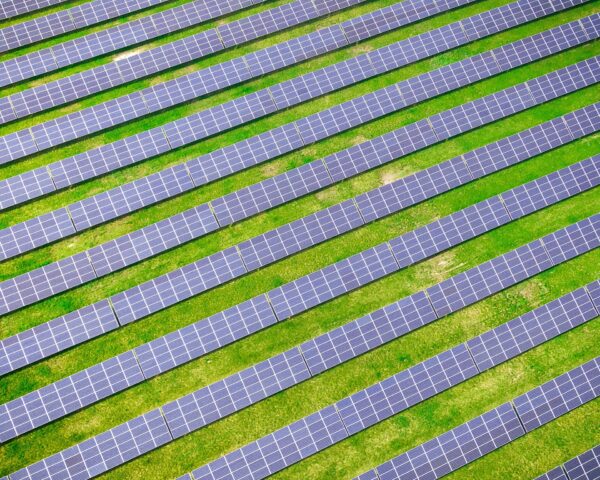Solar cells convert only a small fraction of sunlight into electricity — so how have they become the world’s fastest-growing energy technology?
In this episode of Weiter wissen, we take you on a journey through solar energy’s physics, history, and its place in the modern world. Through our playful Energy Olympics, you’ll learn how solar compares to other energy technologies like coal and gasoline. From exploring Switzerland’s solar potential to revealing the secrets of efficiency, this episode sheds light on the power of solar and its role in shaping our future.
Sources:
International Energy Forum (IEF). The Remarkable Rise of Solar Power. Retrieved from https://www.ief.org/news/the-remarkable-rise-of-solar-power.
National Renewable Energy Laboratory (NREL). Module Efficiency. Retrieved from https://www.nrel.gov/pv/module-efficiency.html.
American Chemical Society. ACS Energy Letters: Advances in Solar Cell Efficiency. Retrieved from https://pubs.acs.org/doi/10.1021/acsenergylett.0c01790.
HAL Archives. Document: Solar Cell Efficiency Advances. Retrieved from https://hal.science/hal-02344164/document?utm_source=chatgpt.com.
Massachusetts Institute of Technology (MIT). Explained: Carnot Efficiency. Retrieved from https://news.mit.edu/2010/explained-carnot-0519.
International Energy Agency (IEA). Technology Roadmap: High-Efficiency, Low-Emissions Coal-Fired Power Generation. Retrieved from https://www.iea.org/reports/technology-roadmap-high-efficiency-low-emissions-coal-fired-power-generation.
Vehq. How Hot Does a Combustion Chamber Get in a Vehicle?. Retrieved from https://vehq.com/how-hot-does-a-combustion-chamber-get-in-a-vehicle/?utm_source=chatgpt.com.
U.S. Department of Energy. Coal Factsheet. Retrieved from https://www.energy.gov/sites/default/files/2024-04/Coal%20Factsheet_4.18.24.pdf?utm_source=chatgpt.com.
Sustainability by Numbers. Inefficiency of Internal Combustion Engines. Retrieved from https://www.sustainabilitybynumbers.com/p/inefficiency-ice.
Swiss Federal Office of Energy (SFOE). Geoinformation: Solar Energy. Retrieved from https://www.bfe.admin.ch/bfe/en/home/supply/digitalization-and-geoinformation/geoinformation/geodata/solar-energy/solar-irradiation.html?utm_source=chatgpt.com.
Swiss Federal Chancellery. Media Release: Renewable Energy in Switzerland. Retrieved from https://www.admin.ch/gov/en/start/documentation/media-releases.msg-id-94437.html?utm_source=chatgpt.com.
Engineering Toolbox. Higher Calorific Values of Fuels. Retrieved from https://www.engineeringtoolbox.com/fuels-higher-calorific-values-d_169.html.
Fraunhofer Institute for Solar Energy Systems (ISE). Photovoltaics Report. Retrieved from https://www.ise.fraunhofer.de/en/publications/studies/photovoltaics-report.html.
Calculations:
Coal and gasoline efficiencies
ηCarnot=1−TcoldThot=1−298873≈65.8%
Solar capacity needed to power Switzerland
Daily electricity consumption: 158,904,110 kWh/dayPeak sun hours: 4 hours/dayRequired solar capacity=4 hours 158,904,110 kWh=39,726 MW
Land area needed to power Switzerland with solar energy
Annual electricity consumption of Switzerland: 58 TWh (58,000 GWh)Solar panel efficiency: 25%Average solar irradiation: 1,100 kWh/m²/yearRequired land area=1,100 kWh/m²/year×0.2558,000 GWh=211 km² This represents less than 1% of Switzerland's total land area of 41,290 km².
Materials and energy for solar installation
Number of panels=0.3 kW/panel; 39,726,000 kW=132,420,000 panelsWeight of panels=132,420,000 panels×20 kg/panel=2,648,400,000 kgWeight of mounting structures=132,420,000 panels×5 kg/panel=662,100,000 kgWeight of cables and components=132,420,000 panels×1 kg/panel=132,420,000 kgWeight of concrete=132,420,000 panels×50 kg/panel=6,621,000,000 kgTotal materials=2,648,400,000+662,100,000+132,420,000+6,621,000,000=10,064,920,000 kg=10,064,920 tonnes total
Energy from coal
Energy content of coal: 24 MJ/kgEnergy from coal=10,064,920 tonnes×1,000 kg/tonne×24 MJ/kg=241,558,080,000 MJDays powered=241,558,080,000 MJ 572,054,795 MJ/day≈422 daysCoal equivalent=316,633,730,400 MJ 24 MJ/kg=13,192,238,767 kg=13,192,239 tonnesDays powered=316,633,730,400 MJ 572,054,795 MJ/day≈554 days
Involved people:
Script: Jose L. Ocana-Pujol
Speaker: Jose L. Ocana-Pujol
Review: Jose L. Ocana-Pujol, Dominik Scherrer
Les articles publiés sur le blog de Reatch reflètent l'opinion personnelle de leurs auteurs et autrices et ne correspondent pas nécessairement à celle de Reatch ou de ses membres.



Comments (0)